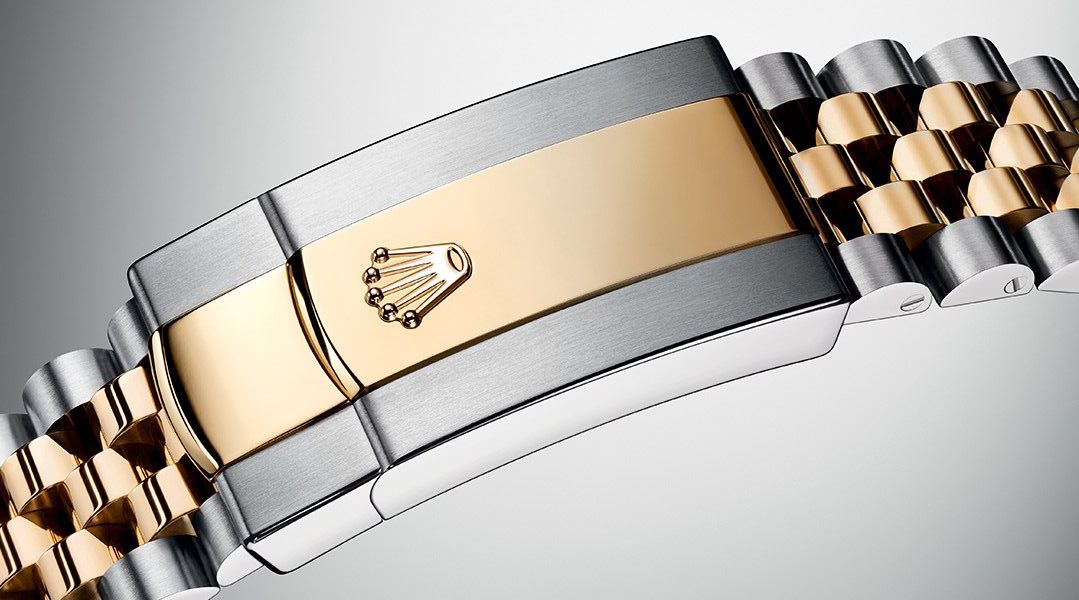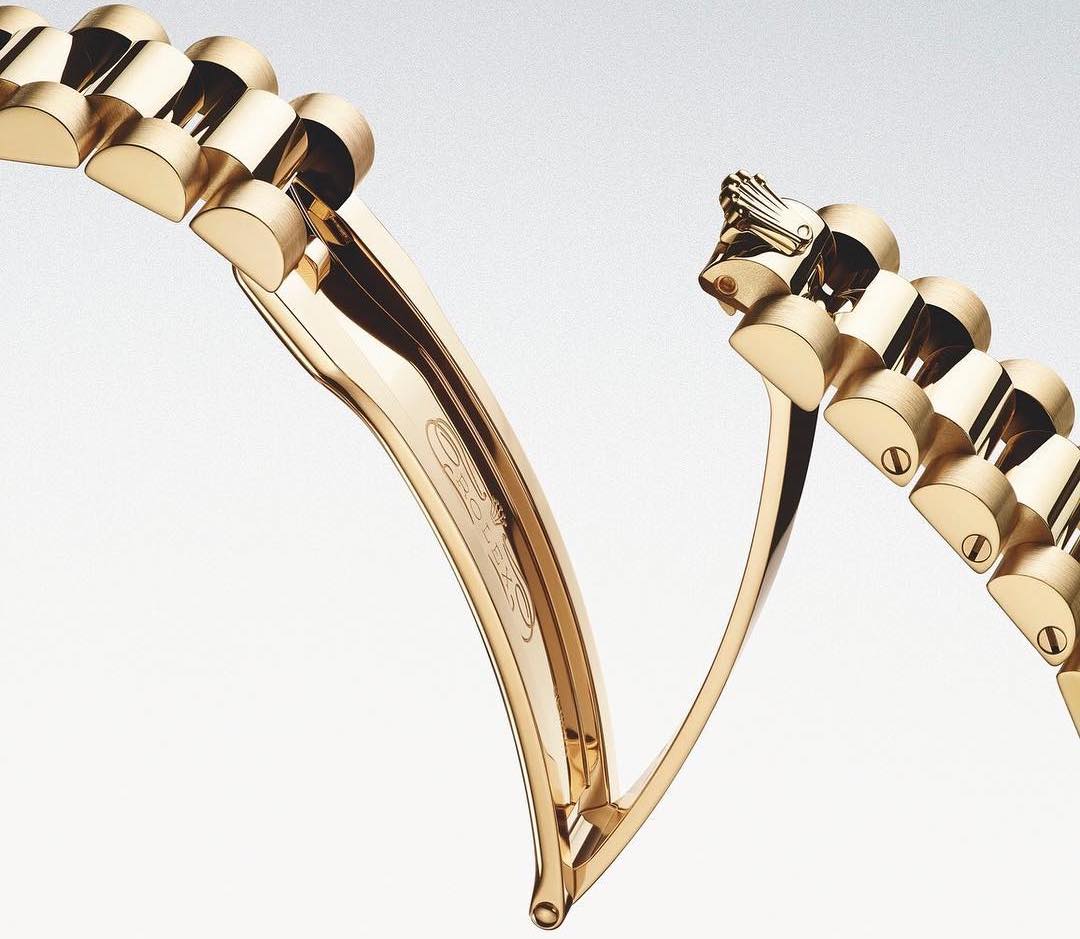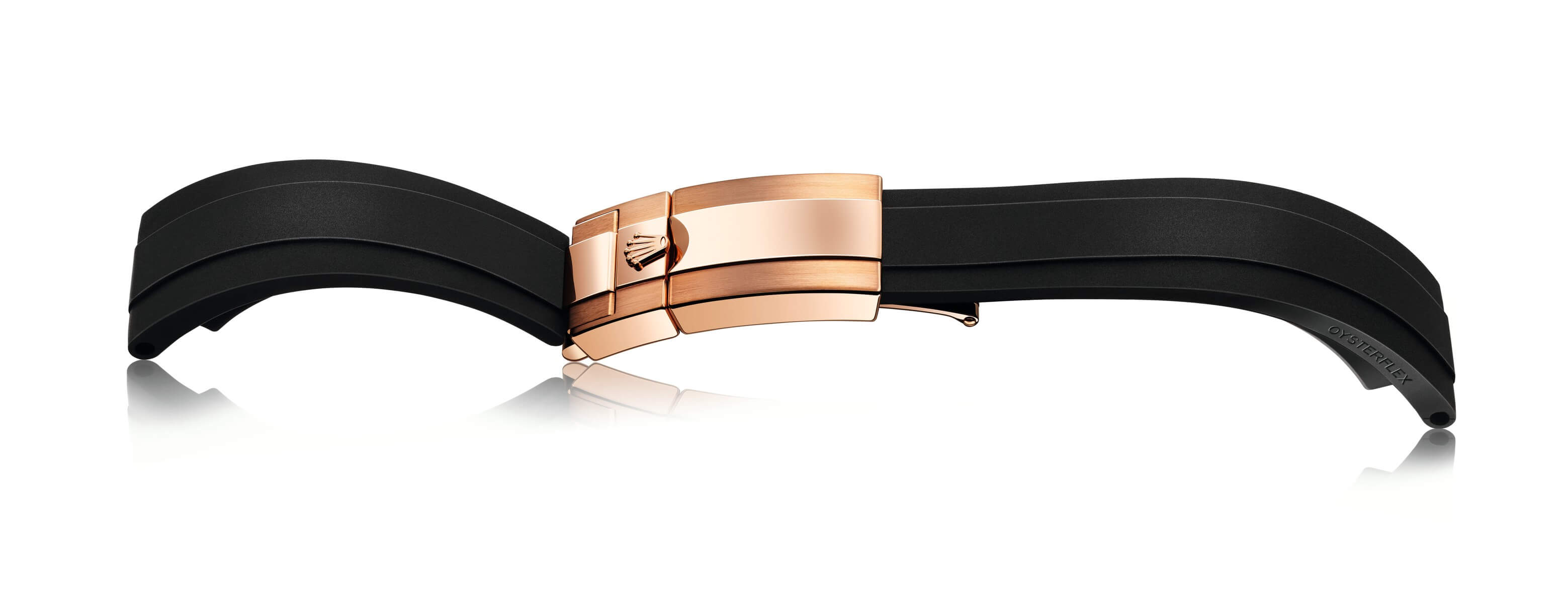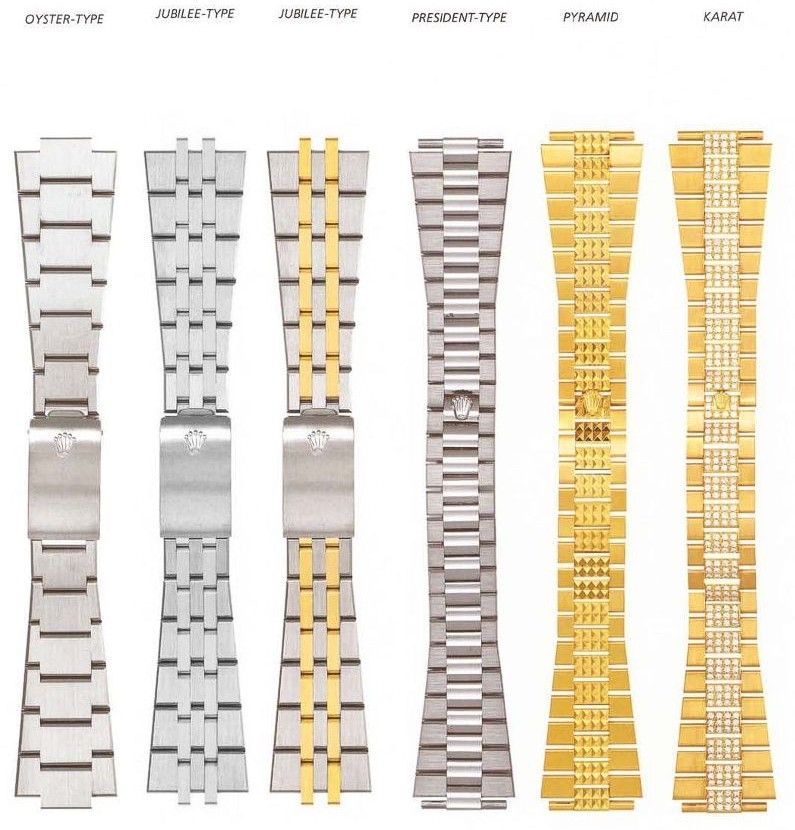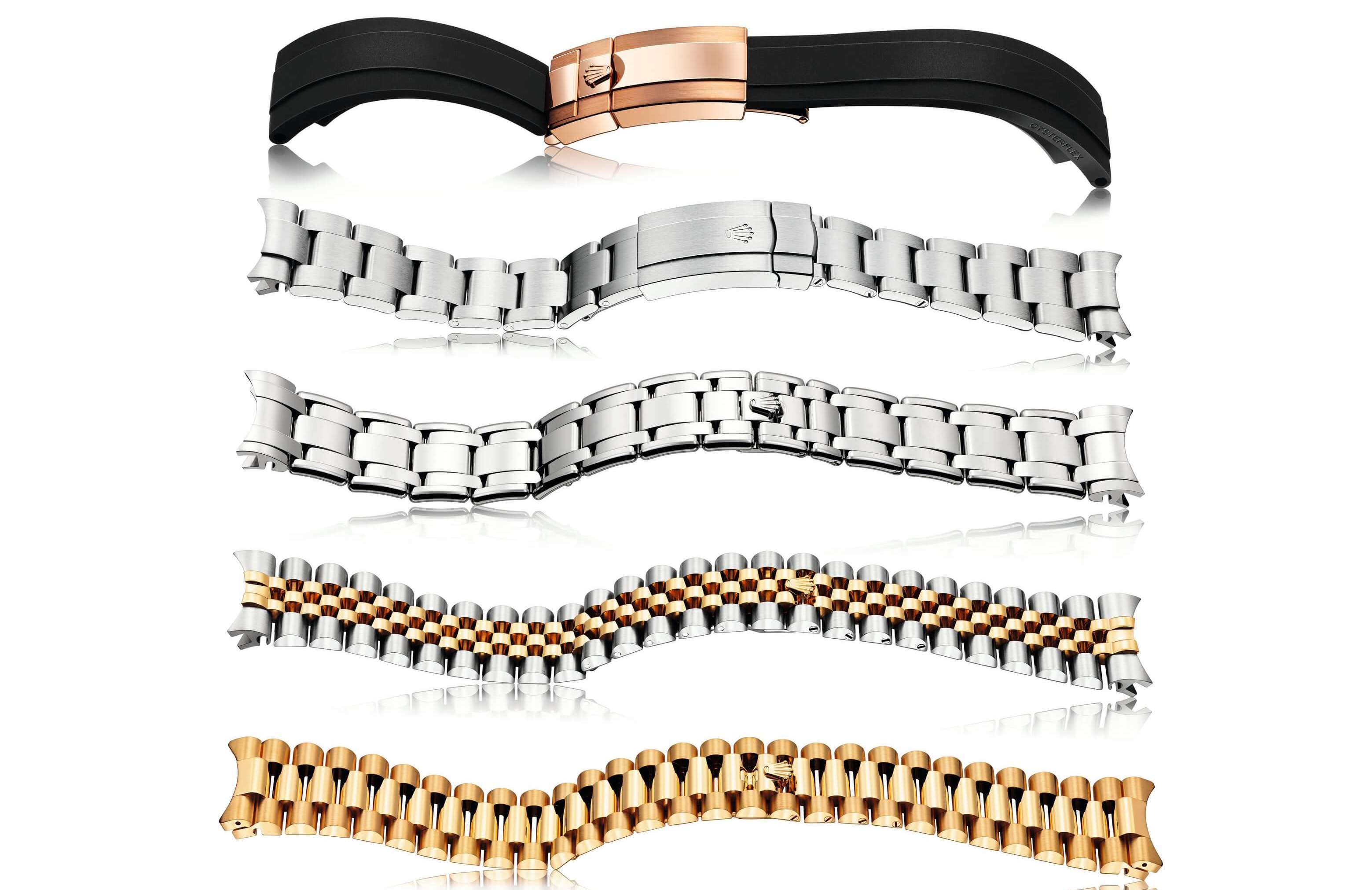
Rolex Bracelets: Complete List and Guide
The bracelet of a watch plays an important role in the identity of a timepiece. Both in terms of wearability and comfort, but also for the overall look. Different types of Rolex watches are equipped with different bracelets to match the design and purpose of the watch.
Rolex makes some of the most iconic watch bracelets in the world, which have become important parts of the identity of the Rolex brand and its different collections.
When you think of Rolex, you probably think of a watch on a metal band. The bracelets have become such an important part of Rolex watches’ identity, and to meet the wants of its audience, the majority of Rolex watches are today available on a metal bracelet. Originally, leather straps were standard on most wristwatches, but thanks to the long-lasting qualities of metal bracelets, they eventually found their way into most brands’ production lines.
Let’s look closer at all the different styles of bracelets that Rolex has developed and designed for its watches. Some exclusive bracelets have also been developed by Rolex for unique timepieces. Variants and tweaks of the bracelets have also been made for specific models, such as the integrated bracelets with pyramid designs. Such bracelets are rare and not commonly seen.
Rolex Oyster bracelet
The Oyster bracelet is perhaps the most iconic bracelet from Rolex. Together with the bracelet manufacturer Gay Frères, Rolex developed a bracelet that was meant to be the perfect match with the design of the Bubble Back watches, as well as their Chronographs. The bracelet was patented in 1947 and introduced into the catalogs in 1948.
Rolex acquired Gay Frères in 1998, which meant getting greater control over the manufacturing process.
Like all of Rolex’s bracelets which have been in production for a long time, the Oyster has been redesigned, revised, and improved throughout the years. But overall, the design of the bracelet has remained the same, with one broad link in the middle, and two thinner ones on each side. The Oyster bracelet is Rolex’s most sporty bracelet, both in terms of look but also in terms of robust-and sturdiness. It is available in all types of metals including full precious metal, full steel, and two-tone.
Rolex Jubilee Bracelet
In 1945, Rolex released the now-legendary Jubilee bracelet. The Jubilee bracelet is, together with the Oyster band, Rolex’s most iconic watch bracelet. Since Rolex did not manufacture its own bracelets at this time, it was made by Gay Frères. Rolex, of course, overtook the production and made it in-house when they acquired the company in 1998.
The Jubilee bracelet is a more elegant and less sporty version of the Oyster bracelet. As the name suggests, it was released to celebrate a jubilee. More specifically, in celebration of Rolex’s 40th anniversary. Originally, the Jubilee bracelet was exclusively designed for the Datejust line, which of course isn’t the case today. The Jubilee bracelet can, since 2018, be found on the GMT-Master II. The bracelet is available in a range of different metals including steel and two-tone variants. It has also been made in full gold, but not anymore as the President bracelet took the place of being the most elegant and dressed-up bracelet in full precious metal.
Rolex President bracelet
The Rolex President bracelet was first introduced in 1956 for the launch of the Oyster Perpetual Day-Date.
Unlike most of Rolex’s other bracelets, the President bracelet is only made in full precious metal. That is yellow gold, rose gold, white gold, or platinum. Furthermore, the President bracelet is exclusively made for the Day-Date. As a result, the bracelet has become an important part of the watches’ identity, although Rolex has also made the Day-Date available on leather straps at times in its history.
The President bracelet has a semi-circular three-piece links design and features a hidden crown clasp to make its design more seamless.
Rolex leather straps

Rolex has used leather straps for many watches over the decades.
Whilst the trend has for a long time been to move away from leather straps, Rolex still makes several of its watches available with a leather strap. Not to mention the Cellini collection, still, is exclusively available on leather straps. Of course, in the brand’s very early days, Rolex watches were only available with leather straps – in line with what the market wanted from a wristwatch during that time.
Since leather straps generally make a watch more dressed-up and elegant, it is found on timepieces that are meant to be more dressed-up.
Rolex Oysterflex bracelet
The Rolex Oysterflex bracelet was first released in 2014 for the Yacht-Master 116655, making it a very recent bracelet innovation from Rolex. And in its marketing, Rolex emphasizes that it is a bracelet, not a strap.
Rubber straps have become more and more popular for watches in recent times due to their comfort and sporty look, and the Oysterflex is Rolex’s answer to that. But in true Rolex fashion, the Oysterflex is not your ordinary rubber strap.
The Rolex Oysterflex bracelet uses metal blades made of titanium and nickel alloy, which are then over-molded with black elastomer. The integrated metal construction has the benefit of making it more sturdy and durable, whilst still retaining the comfort of a rubber strap. Furthermore, the bracelet has raised rubber ”cushions” on the inside of the strap. The cushions flex and create a slight distance between your wrist and the actual strap. This design feature allows your wrist to breathe and prevents uncomfortable sweating against the rubber.
Rolex Pearlmaster bracelet
The Rolex Pearlmaster bracelet was first released in 1992 and is only available on the Rolex Pearlmaster.
This bracelet is and has only been available in precious metals including gold, white gold, rose gold, and Tridor.
Rolex Integrated bracelets
Rolex no longer makes integrated bracelets, but it is an interesting part of the brand’s history.
The integrated bracelets were specifically developed for Rolex’s quartz watches which the brand released during the quartz crisis.
The most common watch to feature an integrated bracelet is the Oysterquartz. The Rolex ”Texan” was also made with an integrated bracelet.
Rolex has made several different designs of integrated bracelets, three of which are inspired by the Oyster bracelet, the Jubilee bracelet, and the President bracelet.
Rolex bracelet innovation and improvements
In Rolex’s early days of metal bracelet production, Rolex used hollow links. The issue with this is that they are not very stable and rigid. Additionally, over time, they will get stretched and lose their original shape. To tackle this, Rolex upgraded the bracelets to use folded links. More material inside the links meant making them robust. But this was not enough as the bracelets did wear and lose their shape over time. To further tackle this issue, Rolex eventually started using solid links instead.
An important update of the bracelet for Rolex was when the brand introduced solid end links. Making the end links in solid metal rather than hollow meant a better fit against the case and an overall more robust and sturdy bracelet.


